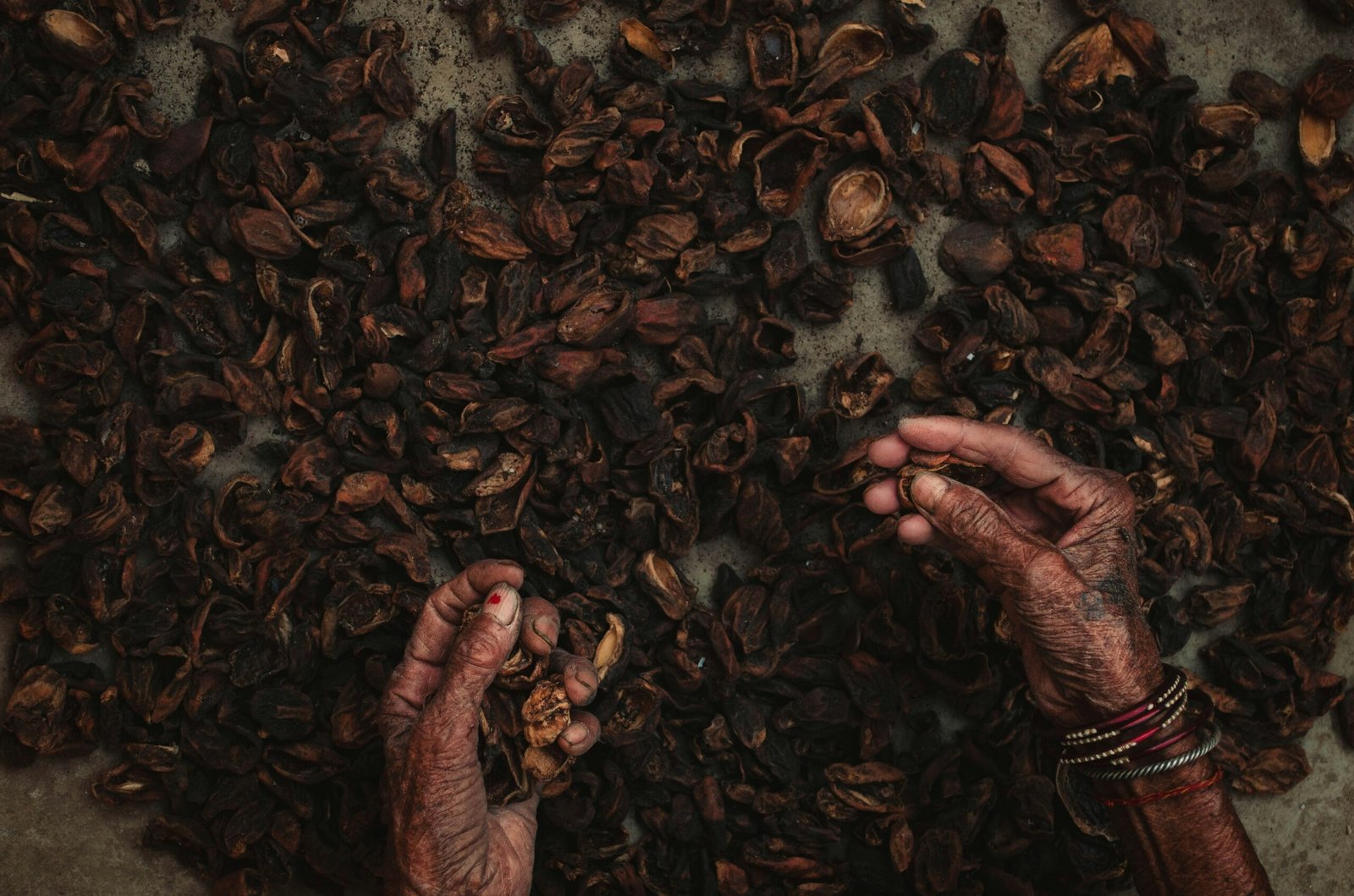The Epic Journey of Cacao
Have you ever stopped to think about the story behind your favorite chocolate bar? It’s more than just a sweet confection; it’s the culmination of a rich history, an intricate process, and the hard work of millions of farmers across the globe. The journey begins with a remarkable plant, the cacao tree, and a story that stretches back thousands of years.
The Ancient Origins of “Food of the Gods”
The history of chocolate isn’t a modern tale—it’s an ancient epic. Long before the first chocolate bar was ever molded, the cacao tree (scientifically named Theobroma cacao, meaning “food of the gods”) was first domesticated over 5,000 years ago in the Amazon basin of South America. From there, it spread to Mesoamerica, where ancient civilizations like the Olmecs, Maya, and Aztecs elevated cacao to a revered status.
For these cultures, cacao was a sacred commodity, more valuable than gold. They didn’t eat it as a solid bar, but instead prepared it as a bitter, frothy beverage, often spiced with chili, vanilla, and other native flavors. Cacao beans were used as a form of currency, a tribute to rulers, and an essential part of religious ceremonies. The Aztec ruler Montezuma II was famously said to have consumed multiple gallons a day, believing it to be a source of energy and an aphrodisiac.

The Great Cacao Crossing: From the Americas to Europe
The Spanish conquistadors were the first Europeans to encounter this powerful drink. While initially finding the bitter concoction unappealing, they soon began to sweeten it with cane sugar and other spices. This new, sweeter version captivated the Spanish court and from there, its popularity spread across Europe. Cacao became a luxury item, consumed by the elite in elegant chocolate houses.
It wasn’t until the 19th century that a series of technological innovations transformed chocolate from a high-society drink into the accessible solid food we know today. The invention of the cocoa press by Dutch chemist Coenraad van Houten in 1828 allowed for the separation of cocoa powder from cocoa butter. This made it easier to mix, more digestible, and paved the way for the creation of the first solid eating chocolate bar by the English firm Fry and Sons in 1847.
The Life of a Cacao Tree
Today, the cultivation of cacao is a delicate art. The Theobroma cacao tree thrives in a narrow band of tropical rainforests, a region often referred to as the “Cacao Belt,” which extends roughly 20 degrees north and south of the Equator. These trees are incredibly sensitive, requiring a specific climate with high humidity, ample rainfall, and shade, which is often provided by other trees like palms or bananas.
A single cacao tree can live for up to 200 years, but it produces marketable beans for only about 25 years. It takes between 3 to 5 years for a new tree to bear its first fruit. A mature tree may produce thousands of flowers a year, but only a small fraction of these will be pollinated by tiny flies called midges, and develop into the colorful, oblong pods we recognize.
From Pod to Processor: The Post-Harvest Ritual
The journey from the tree to your taste buds is a meticulous process.
- Harvesting: Cacao pods don’t all ripen at the same time, so farmers must carefully inspect each tree and harvest the ripe pods by hand.
- Pod Breaking & Pulping: The pods are then split open to reveal the 20 to 60 “beans” nestled in a sweet, white pulp.
- Fermentation: This is the most crucial step for flavor development. The beans, still covered in pulp, are piled into heaps or boxes and covered. The natural yeasts and bacteria in the pulp cause fermentation, which can last from four to ten days. During this time, the temperature rises, the pulp liquefies, and the chemical changes within the beans develop the signature chocolate flavor and aroma.
- Drying: After fermentation, the beans are spread out in the sun to dry. This reduces the moisture content, preventing mold and preparing the beans for storage and transport.
- Bagging & Export: Once dried, the beans are sorted, graded, and packed into sacks, ready to be shipped to chocolate makers around the world.
Fast Facts About Cacao
- Global Production: West Africa, particularly Côte d’Ivoire and Ghana, accounts for over 60% of the world’s cacao supply.
- The Three Main Varieties:
- Criollo: The “king of cacao,” known for its delicate, complex flavor and aroma. It’s rare and expensive, making up less than 10% of the world’s chocolate.
- Forastero: The workhorse of the industry, accounting for about 80% of global production. It’s hardy and more disease-resistant, with a stronger, more bitter flavor.
- Trinitario: A natural hybrid of the other two, offering a balance of hardiness and fine flavor.
- A World of Difference: It takes approximately 400 cacao beans to make one pound of chocolate.
- A Different Kind of Craving: Women are more likely to crave chocolate than men, with some surveys suggesting 91% of women crave it compared to 85% of men.
So the next time you unwrap a chocolate bar, take a moment to appreciate the incredible journey that single bean has taken. It’s a story of ancient civilizations, global trade, and the tireless dedication of farmers who nurture this magnificent plant, turning the “food of the gods” into the delicious treat we all know and love.

